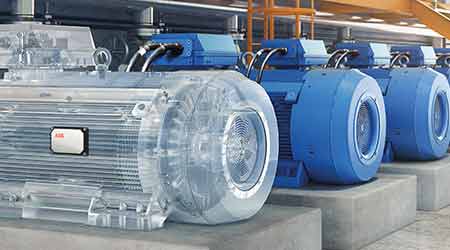 ABB
ABBTrouble Spots to Watch for on Motors
Part two of a three-part article on motors and drives
Motors rarely fail without warning. Paying attention to the environment in which the motor operates will help technicians avoid a failure at the worst possible time. Technicians should consider the areas in which a facility’s motors operate. It is likely these areas share many of these common causes of problems:
Heat. This is by far the most common cause of early motor failure. One rule of thumb states that every increase of 10 degrees Centigrade in operating temperature for a motor’s windings reduces the motor’s operating life by 50 percent. Limiting temperature rise starts with making sure the motor is properly sized for the operation in terms of horsepower, starting current, and rated torque. Technicians also must make certain the area has adequate ventilation.
Dirt. High levels of dirt and lint can gather in the motor’s cooling vanes and drive up its operating temperature. They then can travel into the motor, where they can abrade insulation, shafts, and bearings.
Moisture. Like dirt, moisture attacks a motor’s mechanical and electrical components. It corrodes bearings, rotors, stator laminations and couplings, and it penetrates the insulation of the motor’s windings. While moisture can be a problem for all motors, it is particularly damaging in applications where motors run infrequently, such as with fire pumps.
Technicians should visually inspect all motors regularly to make certain they are not operating in an environment that is too hot or where dirt and moisture are present. This action alone will significantly reduce the number of motor failures.
Vibration. Vibrations can originate within the motor itself or from its load. Failed motor mounts, poor alignment, unbalanced components, and even accumulated debris on moving parts can result in vibrations that can damage windings or cause bearings to fail.
Technicians should inspect all motors regularly for excessive vibration. Motor size and the critical nature of the load it is driving will determine the frequency of those inspections.
While technicians can perform routine inspections to identify issues with heat, dirt, moisture and vibration, additional non-visual tests might be beneficial, particularly for larger motors and those driving critical loads. Motors frequently give warnings of impending failure. Technicians can identify these warnings by conducting tests such as insulation resistance, polarized index, and DC high-potential testing. They will need to track test results over time to determine if deterioration is taking place and, if so, the rate of its progress. These steps will allow managers to plan for replacement before an outage occurs.
Related Topics:















